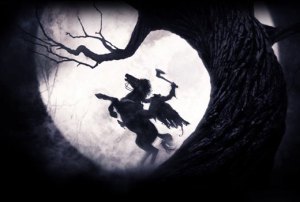Eric Nierstedt's Blog, page 3
December 4, 2014
Points Of Light Holiday Edition: Arthur Christmas
Greetings once again. First off, I must apologize for my recent absence from the blog. I have spent last month prepping for the release of the Lightrider sequel, Equites, and have had little time for any kind of outside work. However, that work is nearing completion, and I can begin December with new postings. And as we are in the holiday season, I am compelled to continue last year’s tradition, and comment on some Christmas stories. To kick things off, I have chosen a new holiday film that seems on it’s way to becoming a holiday classic- Arthur Christmas.
The Story
Arthur Christmas is the youngest son of the Claus family, which has maintained the role of Santa for years, the role passing from father to son throughout the generations. Arthur’s brother Steve is largely responsible for the work each year, having transformed the process into a largely military style operation, with the boys’ father acting in a purely symbolic role. However, the current Claus, who is out of touch and largely working in a bubble, is still unwilling to pass on his title, which frustrates Steve to no end. When a present is found to be undelivered, the elder Clauses ignore it, but Arthur, who believes no child should ever be left behind on Christmas, sets out to correct the error, aided by his grandfather, who also wants to recapture his youth.
What Writers Can Learn: Old vs. New, Sympathetic Characters, Moral Lessons
Arthur Christmas is a unique spin on the Santa Claus legend, largely because of the modern spin it puts on the actual job of being Santa. The amount of technology and stealth style planning that goes into making this version of Christmas is clearly effective, but at the same time, seems cold and impersonal. As such, it is an interesting dichotomy for the viewer. The process is effective and amazing to behold, but it is so far removed from the traditional depictions of Santa, that it becomes uncomfortable to a degree, a fine satire of the effect of modernization on many current technologies and trends.
However, what gives the film much of its strength is that all of its major characters are relatable. In fact, it is hard to find an active villain within this story, which in most stories would be a death knell. However, this story succeeds by giving each Claus, save Arthur, a healthy degree of selfishness, though each one is understandable. Steve is resentful towards his father and does not want his brother to succeed because he doesn’t want him to be a hero. But at the same time, Steve has clearly been the real driving force beyond his father’s recent work, and is justifiably angry at continually being passed over for a job he has proven himself at. Grand-Santa simply wants to feed his ego, but he has also been neglected in his old age, and watched the tradition he worked for be pushed aside. And finally, Santa himself is shown as well past his prime, but refusing to pass down the job to his son. However, this man has been Santa for most of his life, loves his work, and is frightened at the prospect of losing his identity. This makes all of the characters sympathetic for different reasons, and viewers can find their own opinions regarding them and the film itself.
Finally, the film also teaches a fine lesson about one of the greatest aspects of Christmas- the act of giving. Throughout the film, each of the Santas acts in selfish ways and give little thought to the missing gift at first. Then when they do, they either botch the procedure or argue over who should do it. Only Arthur truly cares about making sure the child gets what she asks for, a moment outlined in the movie’s strongest scene. It reminds us of the best part of giving to others- that it doesn’t matter how or who does the giving, only that it is done with care and love for the receiver. It is because of Arthur’s dedication to this, that his family realizes he is the only one that can carry the name of Santa into the future. And that reminds us of why we truly should give at Christmas- simply to make another person happy.
In this case, I can’t offer further reading, but I can implore you to view this film to really see the ideas I’ve explained here. Next week will see the examination of another Christmas classic, and in the spirit of the season, I leave with a gift of my own- a preview of the cover of Equites. And if you are interested in finding out more, I will be at the Clark Public Library in Clark, NJ, from 2-4 this upcoming Saturday, where you can get a special pre-order discount. Happy Holidays.

October 31, 2014
Points Of Light Halloween Edition: Horror Comics
Greetings from the boneyard as we celebrate All-Hallows Eve. Tonight, we head into the past for one of the earliest examples of horror in the last century, horror made with ink and pen and paints for children of all ages. Today, we end October with a look at the grand history of horror comics.
The Background
Horror comics can be traced back to the early 19th century in America, with Prize Comics’ “New Adventures of Frankenstein” widely considered the first of the genre in the States. While many other publishers produced such books, the most well known was EC Comics, and its three series Haunt of Fear, Vault of Horror, and Tales From the Crypt. These comics reached a massive high in the 1940’s, with famous artists such as Johnny Craig and Reed Crandall writing and drawing the frightening tales.
Unfortunately, these books also experienced a tremendous backlash as parents of the time preached on the bad influences of horror and crime in comics. Dr. Fredric Wertham also published Seduction of the Innocent, which claimed that violent caused children to be violent, painted the comic industry as a shadowy, Mafia like operation, and even pointed to Batman and Robin as propagating homosexuality. In response to the claims (which were based on largely undocumented anecdotes), the Comics Code was formed, which put a ban on many of the essential details for horror and crime comics. As a result, most horror comics faded away, though some were repackaged under sci-fi and mystery.
However, horror comics did find their way around these guidelines, and in the 1970’s the code did relax enough to allow Marvel to create the vampire Morbius, and even their own version of Dracula. Alan Moore also had great success at DC resurrecting the Swamp Thing and modern comic writers have found success with characters like Hellboy, and series like 30 Days of Night, Deadman, The Midnight Sons, and Marvel Zombies.
Legacy
While many horror comics were generally simple horror tales, their influence has allowed for much of the creativity in comics today. Without their influence, it is unlikely their would be much, if any, supernatural influence in the comic world today, or any real seriousness. Indeed, many look at the Silver Age of Comics (done under the Comics Code), as one of over the top stories, with such gimmicks, as Lion-Headed Superman, and Bat-Baby (really. They both happened). Even a long lived character like Batman suffered without the elements of those early horror comics, becoming farther and farther removed from his grim beginnings until the 70’s and the loosening of the Code. Because of that, comic writers today have further freedom and creativity to weave not only frightening tales, but to explore darker, more serious elements that challenge readers instead of merely satisfying them.
Further Viewing
As mentioned the EC Comics are largely among the most popular horror comics, with various anthologies existing today. The titles mentioned previously are also worth looking for the modern ramifications of horror. However, those with a taste for the silver screen can also be satisfied. The classic TV anthology Tales From the Crypt, is based on the comic of the same name, and many episodes are direct adaptations. Stephen King and George Romero’s Creepshow is a feature length tribute to EC, featuring graphics and stories straight out of the classic comics. So if you’re looking for a way to get some scary fun next Halloween, take a trip to your local comic story. Until then, boils and ghouls…

October 26, 2014
Points of Light Halloween Edition: The Legend of Sleepy Hollow
Welcome back to the literary graveyard, as we continue our Halloween journey. Today, we take on one of an American horror legends, located in the Hudson River Valley region of New York State. In particular, a small village that plays host to a story of death, ghosts, and mystery- Washington Irving’s The Legend of Sleepy Hollow.
The Story
Familiar to many, Sleepy Hollow is the tale of Ichabod Crane, a schoolteacher that journeys to Sleepy Hollow and pines for the hand of local beauty Katrina Van Tassel. However, Katrina has another suitor- Abraham ‘Brom Bones’ Van Brunt, who delights in pranking and frightening the superstitious Crane. Then at the Van Tassel’s autumn party, Van Brunt spins the tale of the local ghost, the Headless Horseman, a Hessian solider decapitated by a cannonball, and who now rides the countryside looking for his head. Crane is frightened by the story and later leaves the party, presumably after being rejected by Katrina. On his way home, he runs across the Horseman, and endures a panic filled ride to the Church bridge, which is supposedly a barrier to the Horseman. However, the Horseman hurls his flaming head at Crane, who is never again seen in Sleepy Hollow, with many wondering what became of him.
What Writers Can Learn: Ambiguity, Mystery, Suspense
One of the most fascinating things about Sleepy Hollow is its ambiguity. For example, none of the main characters are purely likeable. Ichabod is depicted as an overly strict and moral teacher, but a glutton in his private life, who desires Katrina as a way to access her father’s vast fortune. Van Brunt is a local hero, but a vicious prankster and a bully in many depictions. Even Katrina is hinted to be only interested in Ichabod to make Van Brunt jealous. Each character is genuinely flawed and imperfect, which makes who is likeable up to the reader.
However, that ambiguity also extends to the story itself. Nowhere is this more seen then in the final fate of Ichabod Crane. While it is plausible to believe Ichabod was spirited away by the Horseman, the story also suggests that he escaped and left the town to become a judge in another county. But it is also suggested that his spirit haunts the area. However, the strongest suspicion is placed on Van Brunt, who was described as an agile rider. The story mentions that he always had a knowing look upon his face when the tale was told, hinting that he dressed as the Horseman to frighten off Crane and get Katrina (whom he does marry). What actually happened is left up the reader, and with all the options seeming plausible, the terror of not knowing the truth makes the tale even more frightening.
Of course, no discussion of the story would be complete without the famous chase. Irving wisely builds the section to pulse pounding intensity, beginning with the superstitious Ichabod traveling down a dark road, the ghost stories of the party still ringing in his ears. As the Horseman approaches, Crane demands for his identity, until the ghoul’s frightful visage is revealed. Crane runs off, pushing his horse to the limit as he races for the bridge, the Horseman in pursuit. Crane reaches the bridge, but turns just as the Horseman hurls his flaming at him, ending the chase so suddenly, the reader is left drenched in sweat, stunned into shock and uncertainty, elements that all great suspense stories should.
Suggested Viewings
Sleepy Hollow has been adapted many times in film and television. The Disney adaptation is best for younger viewers, as it maintains a fine balance between Disney charm and frights. Older audiences would be well served by Tim Burton’s Sleepy Hollow, which is loose with the story (Crane is now a NYC constable, called in to investigate the Horseman) and adds a compelling murder mystery and well done gore element, while still paying homage to the original story. The TV movie The Hollow is also a fine choice- a sequel of sorts that deals with The Horseman returning for the descendants of Ichabod Crane, with many dark and genuinely frightening elements. Finally, there is the current TV series Sleepy Hollow, which resurrects a British turncoat version of Ichabod Crane in the modern day, along with the Horseman. While it expands on the story, adding Biblical, historical, and mythical elements as well as a modern crime drama, it is still an enjoyable and fun version, good for anyone looking to expand on the original story.
Come back next time for our final unearthed grave, one filled with ink and paint and plenty of ghouls….








